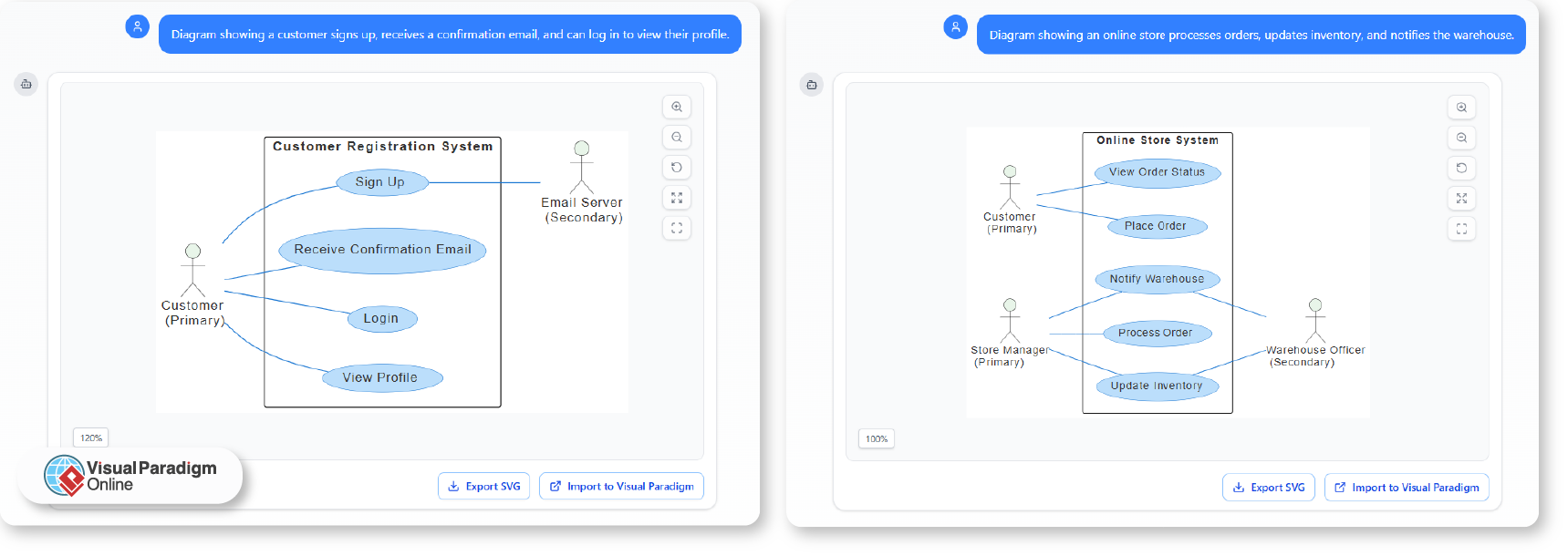System design has traditionally been seen as a domain reserved for developers, engineers, or architects who can translate abstract requirements into formal models. For beginners, the process of understanding how systems interact — and then representing that visually — can feel like learning a new language. Complex notations, unfamiliar shapes, and rigid modeling conventions often create a steep learning curve.
Today, AI is helping lower that barrier. By turning plain-language ideas into structured diagrams, it enables newcomers to grasp technical concepts faster and with greater confidence.
The Learning Challenge in System Design
When students or non-developers first encounter system design, they face two challenges at once: understanding how systems work and how to model them correctly. Tools like UML, BPMN, or ArchiMate can look intimidating — full of arrows, actors, and boxes with unfamiliar symbols.
This visual complexity often distracts from the learning goal. Instead of focusing on logic, beginners worry about syntax: Am I using the right shape? Should this be a class or a component? The result is frustration and slower comprehension.
How AI Simplifies Learning and Modeling
AI-driven modeling changes the starting point. Instead of learning diagram syntax first, beginners can describe systems in everyday language. The AI then interprets the text and generates the appropriate model automatically.
For instance:
- “A customer signs up, receives a confirmation email, and can log in to view their profile.”
- “An online store processes orders, updates inventory, and notifies the warehouse.”

From these natural sentences, the AI can create a clear UML Use Case Diagram or Sequence Diagram. Learners can instantly see how interactions unfold — without having to memorize modeling rules in advance.
This approach promotes understanding through visualization. As beginners observe how their words become diagrams, they start intuitively grasping the logic of modeling languages and learn correct practices through repetition and context.
AI as a Teaching Companion
In Visual Paradigm’s AI Chatbot, this educational value becomes practical. The chatbot listens to what you describe, generates a system diagram, and lets you refine it conversationally. You can ask, “Add a login feature” or “Show what happens when the payment fails,” and the diagram updates immediately.
This turns modeling into an interactive learning experience — more like discussing ideas with a mentor than drawing from scratch. Students can experiment freely, see immediate results, and develop confidence as they explore how systems fit together.
For instructors, it offers a powerful teaching tool. They can guide lessons using examples generated in real time, helping learners visualize cause and effect, feedback loops, or process dependencies without overwhelming them with technical notation.
Making Technical Thinking Inclusive
AI-driven diagram creation does more than make learning easier — it makes it more inclusive. Non-technical team members such as business analysts, product managers, or designers can now contribute to modeling discussions directly. By expressing ideas in plain language, they can collaborate with technical experts without needing formal modeling expertise.
This democratization of design allows teams to bridge communication gaps early in projects. Everyone speaks the same visual language — not by memorizing syntax, but by describing intent.
The Future of Learning with AI Modeling Tools
As AI becomes a regular part of system design education, it will redefine how we teach and learn about complex systems. Instead of starting with symbols and notation, learners will start with meaning — and the AI will handle translation into structured visuals.
This shift nurtures understanding, curiosity, and experimentation. It empowers anyone — whether a student, designer, or entrepreneur — to think in systems and express their ideas visually with confidence.

